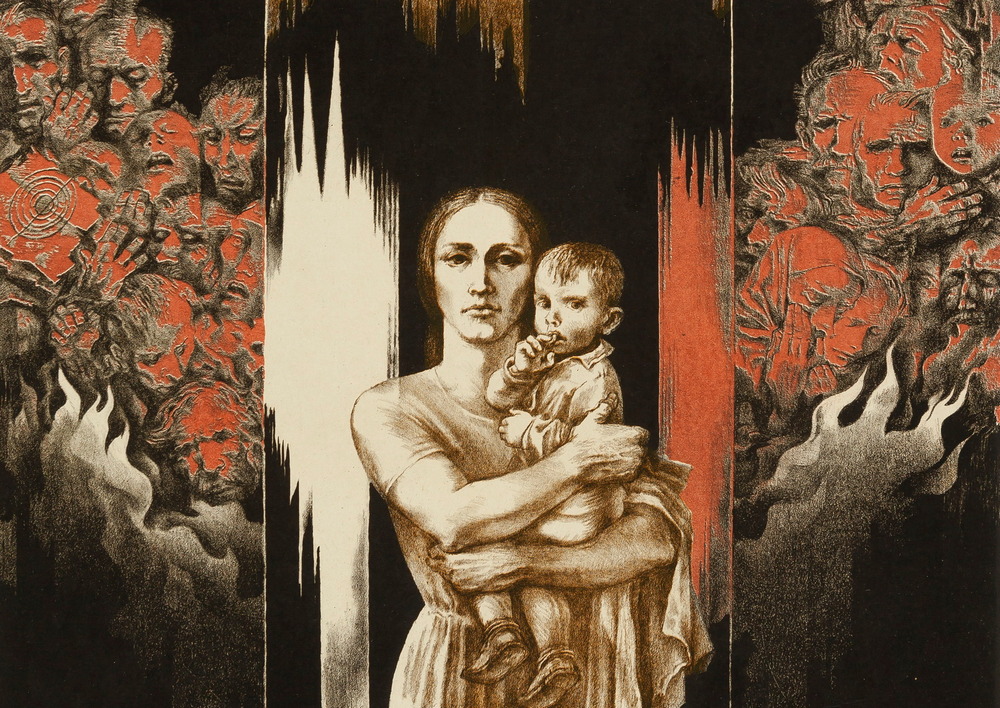March 22 – Khatyn Tragedy Rememberance Day. On this day, 80 years ago, in 1943, Nazi punishers looted and burned to the ground the small Belarusian village of Khatyn along with all its inhabitants – mostly women, old people and children. 149 people died in the fire, 75 of them were children under 16.
The tragedy of Khatyn is one of the bloodiest pages of the history of Nazi genocide in our country during the Great Patriotic War. During the 1941–1944 occupation, more than 600 Belarusian villages were burned along with their population, like Khatyn, 216 villages were never reborn from the ashes. The tragedy of hundreds of burnt Belarusian villages, the deaths of thousands of civilians cannot and must not be forgotten, as they testify to the deliberate character of Nazi Germany’s genocide policy towards the Belarusian population.
The chronicle of the Great Patriotic War is made by three generations of Belarusian artists in works of art. The exhibition includes about 30 works dedicated to the tragedy of the civilian population. This is a monumental series of color lithographs ‘In Memory of Fiery Villages’ (1979–1985) by the People’s Artist of Belarus Vasily Sharangovich. It is based on the book ‘We are from the Fiery Village’ by Ales Adamovich, Yanka Bryl and Ivan Kolesnik (1975), which contains the testimonies of more than 300 survivors who personally experienced the tragedy of the destruction of their native villages, of the deaths of their relatives and neighbors. Sketches of harsh realities of the war ‘In the Wake of the War’ (1942–1944) by war artist Boris Malkin. Etchings from the series ‘Old Ruditsa’ (1982) by Anatoly Aleksandrovich. They are dedicated to the tragedy of this Belarusian village near Dzerzhinsk. It is the Alieksandrovichs’ small homeland. The village suffered the same fate as Khatyn. The diptych ‘Fiery Village’ (1984) by Grigory Tobolich. The cycle ‘Khatyn’ (2022) by Vsevolod Shvaiba, a young Minsk artist. As well as the works of architectural graphics by the authors of the artistic image of the Khatyn Memorial Complex – architects Leonid Levin (1936–2014), Yuri Gradov (born in 1934) and Valentin Zankovich (born in 1937).

